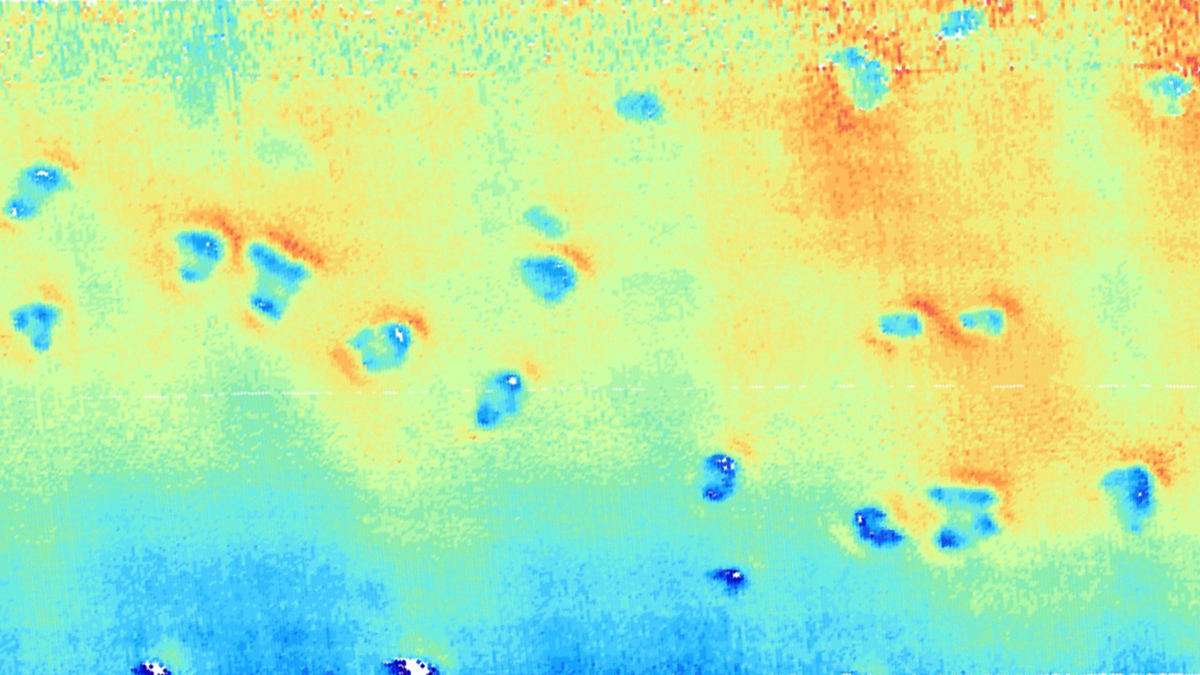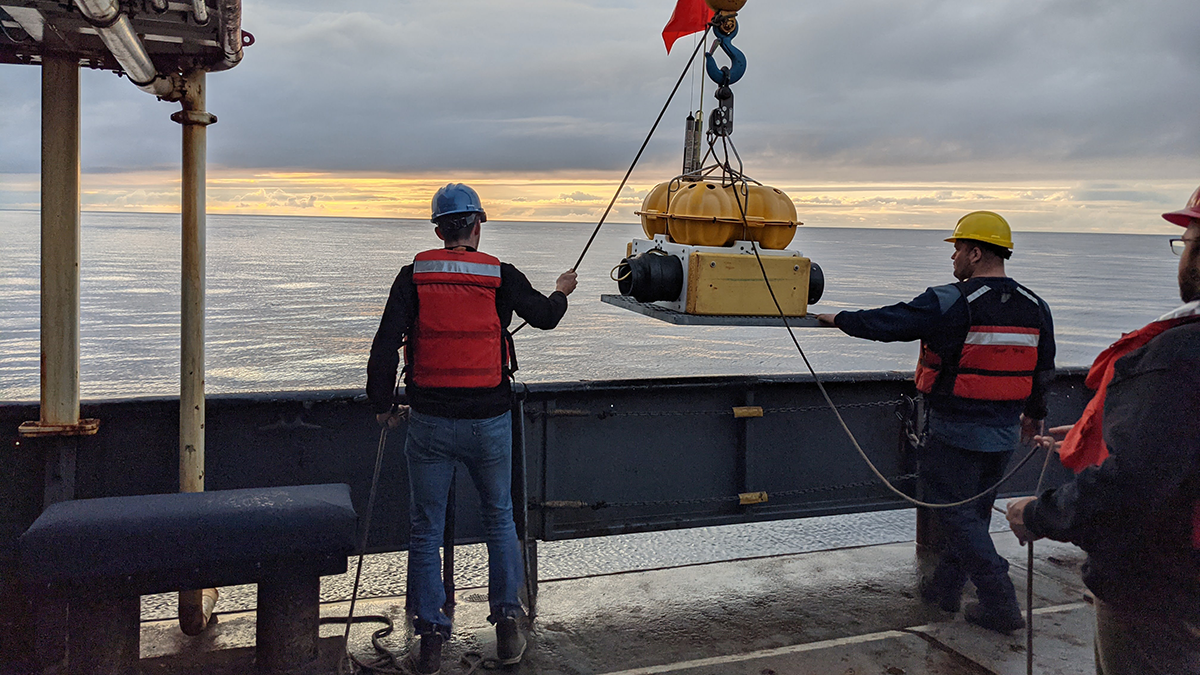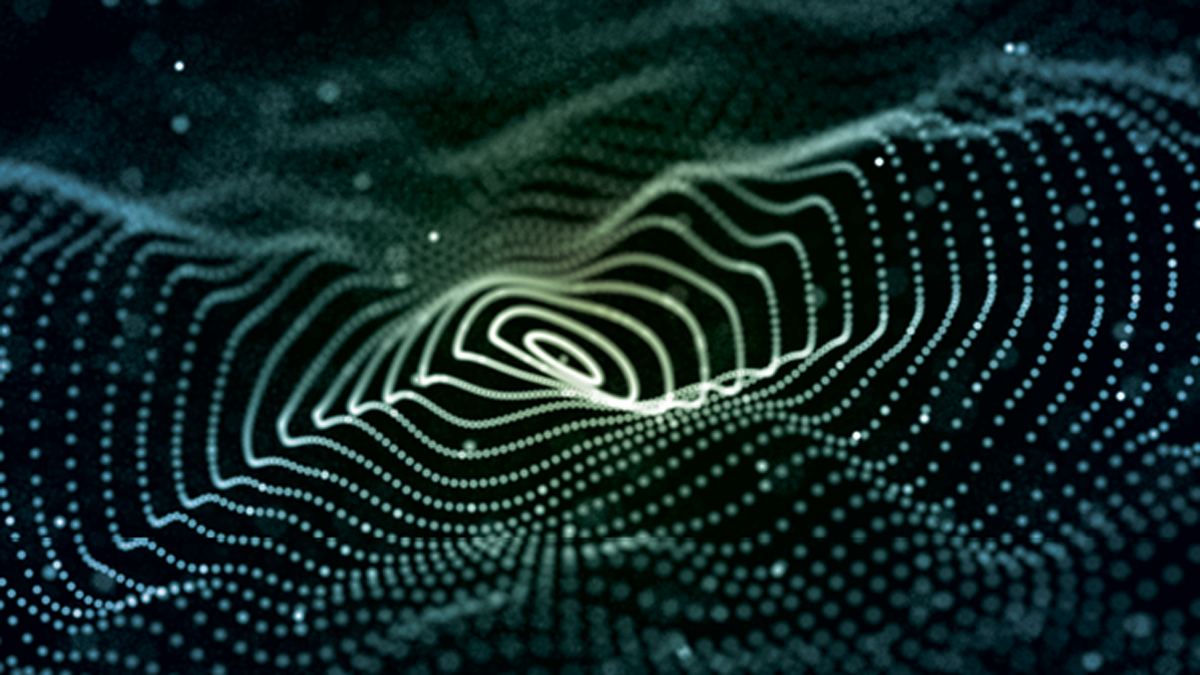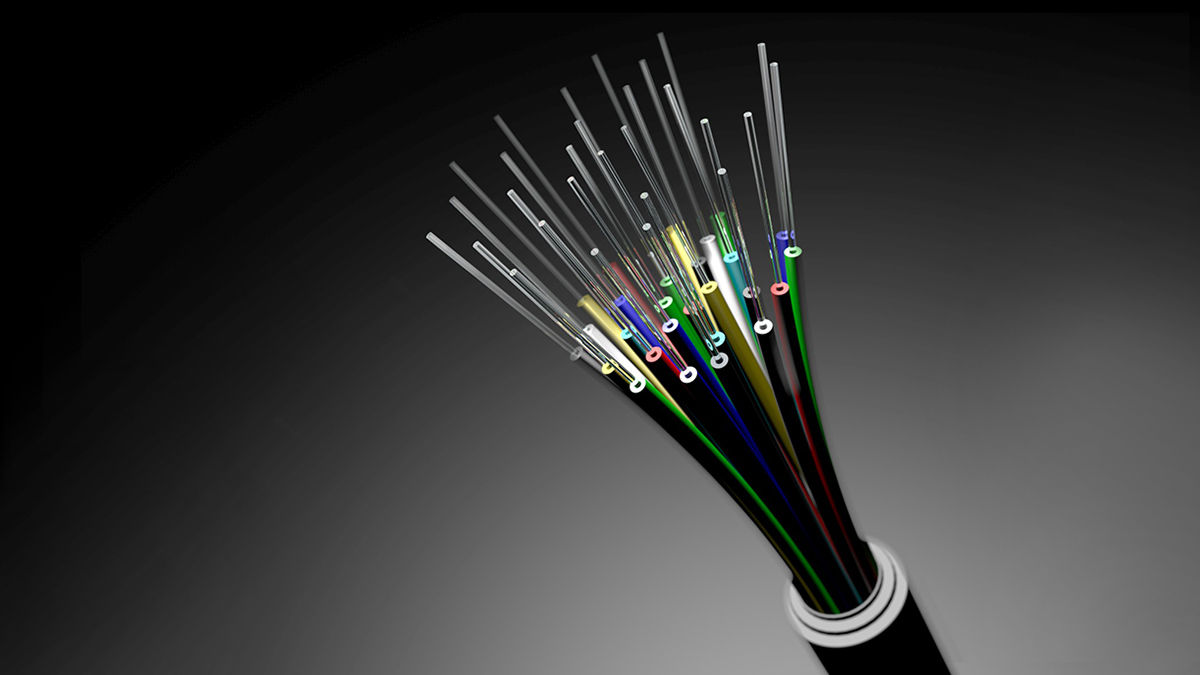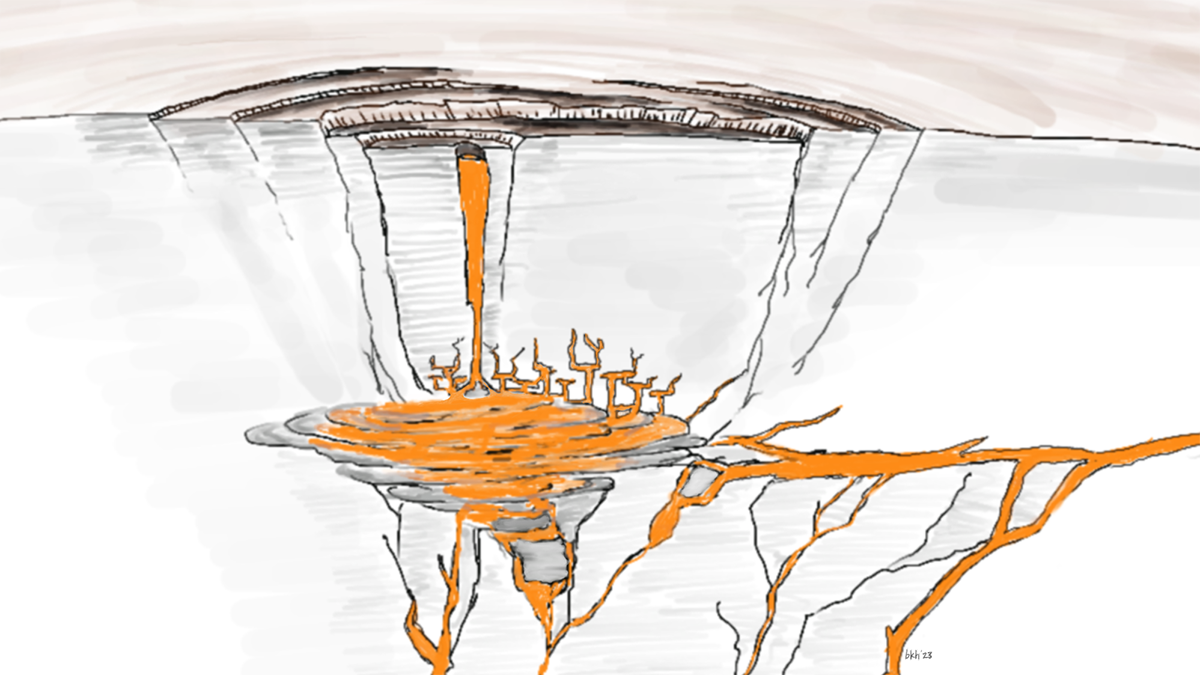Some reef fish get chattier when the Moon is out, while feisty snapping shrimp and other invertebrates pipe down.
acoustics
La música de las esferas del siglo XXI
Científicos y artistas están dando voz a todo, desde planetas hasta agujeros negros, enriqueciendo la experiencia de la investigación y acercando las maravillas del universo a nuevas audiencias.
Mysterious Seafloor Pits May Be Made on Porpoise
Some shallow seafloor depressions off the coast of Germany that look like those associated with methane might instead be the work of porpoises.
The Not-So-Silent Depths
A new book reveals that ocean depths are far from silent voids, but are actually alive with noise.
Oceanic Cacophony
The ocean is a pretty loud place, and anthropogenic noise is adding another layer to the soundscape.
The 21st Century’s “Music of the Spheres”
Scientists and artists are giving voice to everything from planets to black holes, enriching the research experience and bringing wonders of the universe to new audiences.
Thunderquakes Map the Subsurface
Researchers have figured out how rumbling thunder turns to seismic waves and how this shaking could be used to reveal subsurface geology.
When the Woods Get Noisy, the Animals Get Nervous
New study uses trail cameras and speakers to isolate what human sounds do to animals.
Earth Is Noisy. Why Should Its Data Be Silent?
Combining visual and sonic representations of data can make science more accessible and help reveal subtle details. The recent decade-long eruption of Hawaii’s Kīlauea Volcano offers a prime example.



